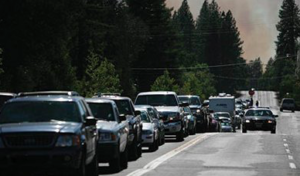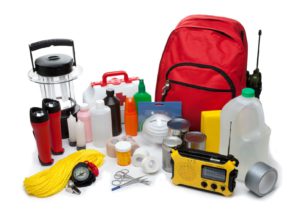Learning your evacuation route is essential for your safety in emergencies such as wildfires, floods, or earthquakes, as it enables you to swiftly and securely exit a hazardous area. Planning several routes ahead of time helps you evade being caught in traffic hazards and guarantees that you can reach safety effectively.
Evacuation Warning vs. Evacuation Order
An evacuation warning means there’s impending danger to your life or property. If a warning is given assume an evacuation order will follow. Start gathering important items for your family and pets. Any individuals who need extra time to evacuate, or anyone with large animals, should pack-up and leave when a warning is issued.
An evacuation order means there’s an immediate threat to your life and you need to leave right now! It’s critical to follow all directions from law enforcement to ensure you and your family evacuate safely.

When to Evacuate
Leave as soon as evacuation is recommended to avoid being caught flood waters, or road congestion. In some emergencies, officials may not have time to knock on every door. If you are advised to leave, don’t hesitate!
Officials will determine the evacuation areas and escape routes based on the danger’s location, behavior, terrain, etc.
You will be advised of potential evacuations as early as possible. Take the initiative to stay informed and aware.
Do not return to your home until officials determine it’s safe. Notifications will be given as soon as possible and will take into consideration safety and accessibility.

Pack a Go-Bag
When a disaster hits, you might not have time to gather necessary supplies. Pack a Go Bag so it’s ready to grab in case of an emergency. Think about the items you’d take if you only had two minutes to leave your home:
- Important Documents
- Cash
- Medicine & important medical information
- Phone charger & backup battery

Resources:
